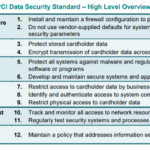In the world of cybersecurity, antivirus companies play a crucial role in protecting our devices from the ever-evolving threats that lurk in the digital realm. But have you ever wondered how they keep up with the constant need to update their software without inadvertently introducing new vulnerabilities? This article will shed light on the meticulous measures these companies take to ensure their updates are foolproof, safeguarding our devices without compromising our security.
Definition of Antivirus Updates
Understanding computer virus
Antivirus updates, also known as virus definition updates, refer to the regular updates provided by antivirus companies to ensure that their software can effectively detect and protect against the latest computer viruses, malware, and other security threats. In order to understand these updates, it is essential to comprehend the nature of computer viruses.
A computer virus is a malicious software program that can replicate itself and infect other programs, files, or even an entire computer system. These viruses can cause various problems, ranging from impairing the performance of a computer to stealing sensitive information or even rendering the system completely inoperable.
The purpose of antivirus updates
The main purpose of antivirus updates is to keep the antivirus software up to date with the evolving landscape of computer viruses and other malicious threats. As cybercriminals continuously create new viruses and malware, antivirus companies must stay vigilant and constantly develop new detection techniques and solutions. Updates are essential for antivirus software to effectively detect and neutralize new threats, thereby protecting users from potential harm.
How update patches vulnerabilities
Antivirus updates not only provide the latest virus definitions but also include patches that address vulnerabilities in the antivirus software itself. These vulnerabilities can be exploited by hackers to bypass or disable the antivirus protection. By releasing timely updates, antivirus companies can fix these vulnerabilities and ensure that their software remains robust and resistant to attacks.
The Cycle of Antivirus Updates
Identifying new threats
To ensure their updates are effective, antivirus companies employ various methods to identify new threats. This includes analyzing malware samples, actively monitoring online forums and underground markets where cybercriminals operate, and participating in information sharing networks with other cybersecurity organizations. By staying at the forefront of emerging threats, antivirus companies can proactively develop specific detection techniques and develop the necessary updates to protect their users.
Coding the solution
Once a new threat is identified, antivirus companies need to develop the appropriate detection and mitigation techniques. This involves coding the solution into their antivirus software. Skilled programmers and security experts work tirelessly to analyze the threat and devise effective algorithms and measures to counteract it. The resulting solution is then integrated into the antivirus software as part of the update.
Testing phase
Before releasing the update to the public, antivirus companies subject it to thorough testing. The testing phase aims to ensure that the update does not introduce any unintended side effects or compatibility issues with different operating systems or other software. Rigorous testing is conducted in various simulated environments, ensuring that the update functions correctly and does not create any additional vulnerabilities.
Deployment of update
Once the update has been thoroughly tested, it is deployed to users. Antivirus companies have various methods of delivering updates, including automatic updates, manual updates, and the option for users to download updates from the antivirus company’s website. The deployment process is carefully planned to ensure that users can easily and seamlessly update their antivirus software without disrupting their daily activities.
Pre-update Testing
Importance of pre-update testing
Pre-update testing plays a crucial role in ensuring the quality and effectiveness of antivirus updates. It allows antivirus companies to identify and resolve any potential issues or vulnerabilities before the update is released to users. By conducting comprehensive pre-update testing, antivirus companies can minimize the risks associated with faulty updates and ensure a smooth and secure update process for their customers.
Realistic environment replication
To simulate real-world scenarios and accurately assess the impact of the update, antivirus companies replicate various environments during pre-update testing. This includes testing the update on different operating systems, hardware configurations, and network setups. By replicating diverse environments, antivirus companies can identify and address any compatibility issues that may arise, ensuring that the update can effectively protect users across different setups.
Utilization of automated testing tools
Antivirus companies utilize automated testing tools to streamline and enhance the pre-update testing process. These tools can simulate different attack scenarios, check for vulnerabilities, and detect any abnormal behavior of the antivirus software after the update. By automating certain aspects of the testing process, antivirus companies can increase efficiency, identify potential issues more quickly, and ensure the highest level of security in their updates.
Post-update Testing
The need for post-update testing
Post-update testing is a critical step in the antivirus update process. It allows antivirus companies to verify that the update has been successfully deployed and is functioning as intended. While pre-update testing aims to catch any potential issues before release, post-update testing provides an additional layer of assurance and ensures that users receive a reliable and secure update.
How errors are identified post-launch
During post-update testing, antivirus companies actively monitor the performance and behavior of the update across a wide range of user systems. They collect data on any potential errors, crashes, or performance issues encountered by users after the update. Additionally, users can report any issues they encounter, providing valuable feedback for antivirus companies to identify and address errors that may have been missed during pre-update testing.
Correction of errors identified post-launch
Once errors are identified, antivirus companies employ a systematic approach to correct them. This involves analyzing the root cause of the error, developing a fix or patch, and thoroughly testing the solution to ensure it resolves the error without introducing new vulnerabilities. The corrected update is then released to users through a subsequent update, ensuring that any issues are promptly addressed and the antivirus software remains reliable and secure.
Engaging Ethical Hackers
Definition of ethical hacker
Ethical hackers, also known as “white hat” hackers, are cybersecurity professionals who use their skills and knowledge to identify vulnerabilities and weaknesses in computer systems, networks, and software, with the permission of the system owner. Unlike malicious hackers, ethical hackers work within legal and ethical boundaries to uncover security flaws and help organizations improve their overall cybersecurity posture.
Roles played by ethical hackers
Antivirus companies often engage ethical hackers to perform thorough security assessments of their software and updates. Ethical hackers utilize their expertise to identify potential vulnerabilities that may have been overlooked during pre-update testing. By actively seeking out any weaknesses or vulnerabilities, ethical hackers assist antivirus companies in further enhancing the security and reliability of their updates.
How ethical hackers provide ongoing security assurance
Ethical hackers not only contribute to the initial testing of antivirus updates but also provide ongoing security assurance. They continuously monitor the antivirus software, updates, and any reported vulnerabilities to ensure that any potential threats are promptly addressed. By actively collaborating with ethical hackers, antivirus companies can stay proactive in identifying and patching vulnerabilities, providing their users with a higher level of security and protection.
Customer Feedback on Updates
Active monitoring of customer feedback
Antivirus companies actively encourage users to provide feedback on their updates. They provide channels for users to report any issues, concerns, or suggestions they may have. This feedback is invaluable to antivirus companies as it allows them to understand user experiences, gain insights into potential issues that may have been missed during testing, and make necessary improvements to upcoming updates.
How beta releases increase feedback
Antivirus companies often release beta versions of their updates to a limited number of users before the official release. These beta releases allow users to test and provide feedback on the new update in a real-world environment. By expanding the feedback pool, antivirus companies can gather a wider range of experiences and detect any potential issues that may not have been uncovered during pre-update testing. This iterative feedback loop helps ensure that updates are thoroughly refined and optimized before reaching a wider user base.
Action taken on customer-reported issues
When customers report issues with an update, antivirus companies take prompt action to investigate and resolve the problem. These reported issues are treated as high priority, as they directly impact user experience and the effectiveness of the antivirus software. The antivirus company’s support team and developers work together to thoroughly analyze the reported issue, develop a solution, and release an update that addresses the problem. By actively addressing customer-reported issues, antivirus companies demonstrate their commitment to delivering reliable and secure updates to their users.
Efficient Version Control
Significance of version control
Version control is a crucial aspect of the antivirus update process. It allows antivirus companies to manage and keep track of various versions of their software and updates. Version control ensures that updates are developed and released systematically, with proper documentation and traceability. It also allows for efficient collaboration among development teams and helps maintain the integrity and security of the antivirus software.
Version control best practices
Antivirus companies follow a set of best practices to ensure efficient and secure version control. This includes utilizing dedicated version control systems such as Git or Subversion, organizing code repositories in a logical and standardized manner, enforcing strict access controls and permissions, and implementing thorough documentation processes to track changes and updates. By adhering to these best practices, antivirus companies can effectively manage and control the different versions of their software and updates.
How version control contributes to secure updates
Version control plays a crucial role in ensuring the security of updates. By maintaining a well-organized version control system, antivirus companies can easily track changes made to the software during the development and update process. This enables them to quickly identify any unauthorized modifications or potential security breaches. Version control also facilitates efficient code reviews and audits, ensuring that updates undergo rigorous scrutiny and minimizing the risk of introducing new vulnerabilities.
Red Team vs Blue Team Processes
Understanding Red Team vs Blue Team
The concept of Red Team vs Blue Team processes originates from military exercises and has been adapted for cybersecurity purposes. In the context of antivirus updates, the Red Team represents the attackers or adversaries, while the Blue Team represents the defenders or antivirus companies. This dual-team approach allows antivirus companies to adopt a proactive stance in identifying and mitigating vulnerabilities during the update process.
Benefits of this dual-team approach
The Red Team vs Blue Team approach provides several benefits in ensuring secure antivirus updates. The Red Team, composed of skilled and experienced cybersecurity professionals, actively tries to exploit vulnerabilities in the antivirus software and updates. This helps antivirus companies identify any weaknesses and areas for improvement that may have been overlooked during pre-update testing. The Blue Team, on the other hand, analyzes the tactics and techniques used by the Red Team and strengthens the antivirus software’s defenses accordingly. This collaborative approach helps antivirus companies continuously enhance the security and resilience of their updates.
Practical application in antivirus updates
In practice, antivirus companies may establish dedicated Red Team and Blue Team units or engage external cybersecurity firms to perform these roles. The Red Team conducts simulated attacks, using various techniques like penetration testing and vulnerability scanning, to test the antivirus software’s resistance and effectiveness against potential threats. The Blue Team closely monitors the Red Team’s activities, analyzes their findings, and implements necessary measures to address vulnerabilities and strengthen the antivirus software. This ongoing process allows antivirus companies to stay one step ahead of attackers and deliver updates that are robust and secure.
Patch Management Strategy
Importance of patch management
Patch management is a critical aspect of ensuring secure updates. Antivirus companies implement comprehensive patch management strategies to efficiently distribute patches that address vulnerabilities and improve the overall security of their software. Patch management helps prevent exploitation of vulnerabilities by promptly deploying necessary updates and reduces the window of opportunity for attackers to compromise systems.
Ideal features of patch management software
Effective patch management software is essential for antivirus companies to efficiently distribute updates and keep their users protected. Ideal features of patch management software include automated vulnerability scanning and assessment, centralized management and deployment of patches, reliable and secure distribution channels, comprehensive reporting and auditing capabilities, and integration with antivirus software to ensure seamless updates. These features enable antivirus companies to effectively manage and prioritize patches, ensuring that users receive updates in a timely manner.
How patch management ensures secure updates
Patch management ensures secure updates by addressing vulnerabilities exploited by attackers. Through regular vulnerability scanning and assessment, antivirus companies can identify potential weaknesses in their software and develop patches to mitigate these vulnerabilities. By promptly deploying these patches using robust and secure patch management systems, antivirus companies can ensure that users have the latest protection against emerging threats. Patch management enables antivirus companies to respond quickly to security issues, reducing the risk of exploitation and enhancing the overall security of their updates.
Collaboration within Cybersecurity Industry
The role of collaboration in the cybersecurity industry
Collaboration within the cybersecurity industry plays a significant role in ensuring the effectiveness of antivirus updates. Antivirus companies actively collaborate with other cybersecurity organizations, government agencies, and industry stakeholders to share threat intelligence, exchange best practices, and collectively develop solutions to combat evolving threats. By sharing knowledge and working together, antivirus companies strengthen their capabilities and provide users with a higher level of security.
How shared intelligence can prevent vulnerabilities
Shared intelligence, such as information about new threats, attack techniques, and vulnerabilities, is crucial in preventing vulnerabilities and ensuring secure updates. Antivirus companies collaborate through information sharing platforms and networks, where they actively contribute and gain access to valuable threat intelligence. This shared intelligence enables antivirus companies to stay informed about emerging threats, improve their detection techniques, and update their software with the latest protection mechanisms, ultimately preventing vulnerabilities from being exploited.
Examples of industry collaborations
The cybersecurity industry has witnessed numerous successful collaborations among antivirus companies and other stakeholders. One notable example is the Cyber Threat Alliance, an industry-led group of cybersecurity vendors dedicated to sharing threat intelligence and collaborating in the fight against cyber threats. This collaboration facilitates the timely exchange of information, allowing antivirus companies to develop effective updates and protect users from the latest threats. Additionally, antivirus companies often partner with academic institutions and research organizations to leverage their expertise and conduct joint studies on emerging threats and security trends, further enhancing the industry’s collective knowledge and capability.
In conclusion, antivirus companies employ a range of measures to ensure their updates do not introduce new vulnerabilities. Through a comprehensive cycle involving identifying new threats, coding solutions, testing, and deployment, antivirus companies address vulnerabilities and protect users against emerging threats. Pre-update testing, post-update testing, engagement with ethical hackers, collaboration within the cybersecurity industry, efficient version control, patch management, and the dual-team approach of Red Team vs Blue Team all contribute to the overall security and reliability of antivirus updates. By diligently following these processes and continuously improving their software, antivirus companies strive to deliver updates that effectively safeguard users’ systems and data.







